Teddy Weahkee and Robert Weahkee
Zuni Fetish Carvings
The Weahkee family is among the oldest carving family in Zuni. It’s origins predate history. The earliest recorded Weahkee carver was Teddy Weahkee who worked with noted Zuni dealer C.G. Wallace. Robert Weahkee’s father was Anderson Weahkee. Anderson’s mother was Edna Leki and Edna’s father was Teddy Weahkee.
Harvard’s Peabody Museum, Castle McLaughlin wrote (Oct 201I)
“The Ward family donation includes a range of historic and contemporary carvings. The highlight of the collection consists of a group of traditional carvings made for trader C.G. Wallace by Leekya Deyuse (1899–1966) and his family and by Teddy Weahkee (c.1890–1965) between the 1920s and 1960. Leekya and Weahkee were among the most important Zuni artists of the twentieth century, and both played an important role in reviving traditional lapidary arts, including stone-to-stone mosaic inlay jewelry. Trader C. G. Wallace encouraged them to make stringing fetishes for jewelry, small “pocket” carvings and larger “table fetishes,” and he provided them with high-quality turquoise, shell, serpentine, and jet. The traditional-style fetishes they produced during the period 1930–1960 often represent prey animals such as mountain lions and bears, some of which are wrapped with turquoise, coral, and shell beads and miniature arrow points. They also made ornate jet and shell frogs, snakes, and horses accented with “petit point” turquoise inlay. They carved in a minimalist style, making animal forms that are rounded and three-dimensional, but have few details.
Wallace also apparently inspired them to begin carving human figurines, some of which are portraits of actual people. This was a new and more detailed approach to carving. Few such figurines survive in museum and private collections, but the Ward donation includes at least half a dozen examples. It may well be that Wallace commissioned most of these for himself.
The donation also includes a number of contemporary fetish carvings. Today, Zuni artists carve in a much more realistic, representational style. They also use more exotic imported materials such as jade, and they have expanded the repertoire of forms to include animals from around the world, mythological creatures, cartoon figures, and even dinosaurs. Several members of the Leekya and Weahkee families, however, still carve in the older style. The donation includes a wolf made by Leekya’s daughter Alice Homer, a travertine bear carved by Leekya’s son Frances and two travertine horses made by his grandson Hayes. —Castle McLaughlin”
Robert Weahkee is the great grandson of Teddy Weahkee. Robert Weahkee takes great pride in his Zuni carving heritage and began carving professionally when he was about 15 years old. He started his career by carving old style, Zuni alter dolls. As the name suggests, alter dolls have religious meaning to the Zuni people. In general, they bring good fortune and protect the owner.
Robert is now in his early twenties and his work has progressed considerably. His carvings, while still usually carved in antler, have moved in a more contemporary direction. Other Weahkee family carvers that are still working are Robert’s Aunts Lena Boone and Dinah Gasper and Dina’s daughter, Debra Gasper.


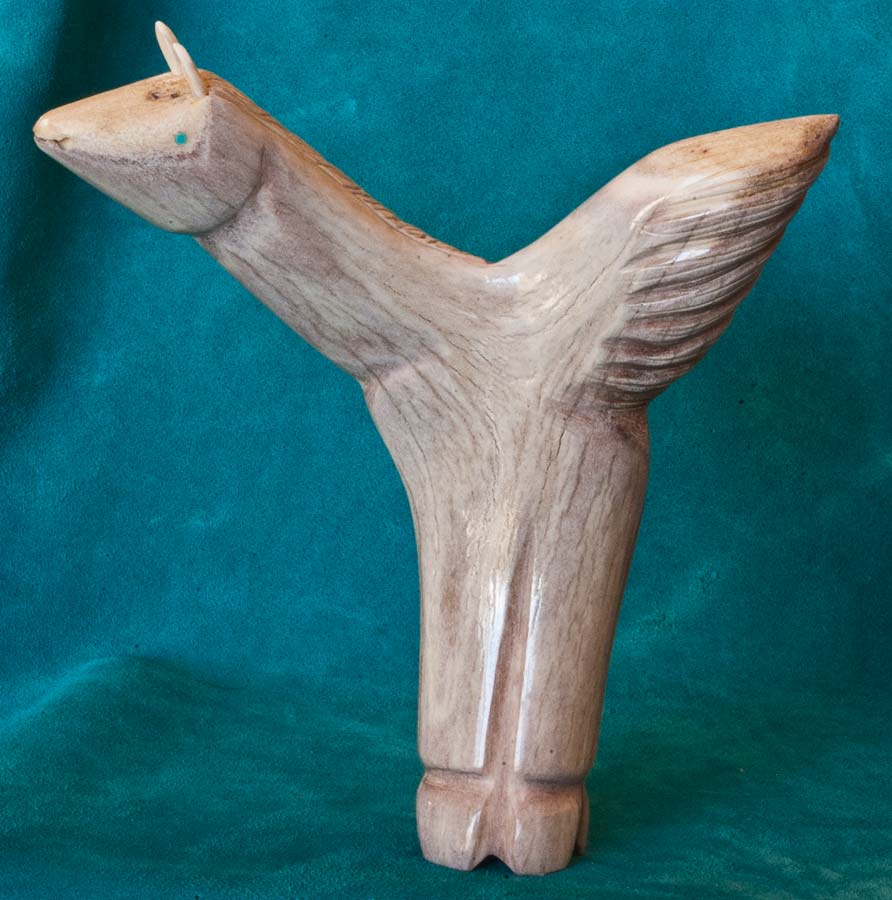
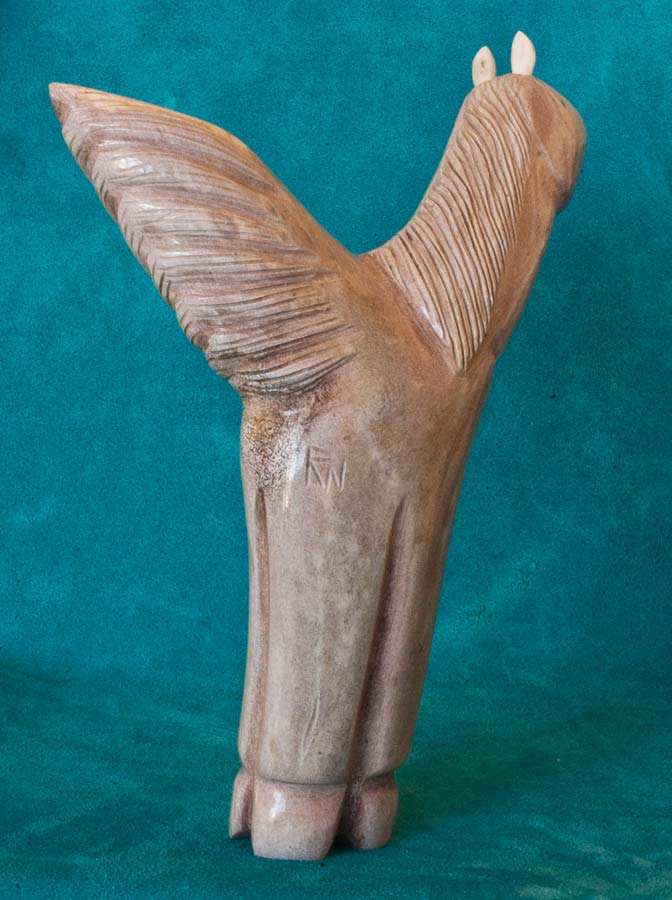
Robert Weahkee
Hand carved antler horse with turquoise inlaid eyes. Notice the branding on the backside.
6″ long 7 1/8″ tall
$216

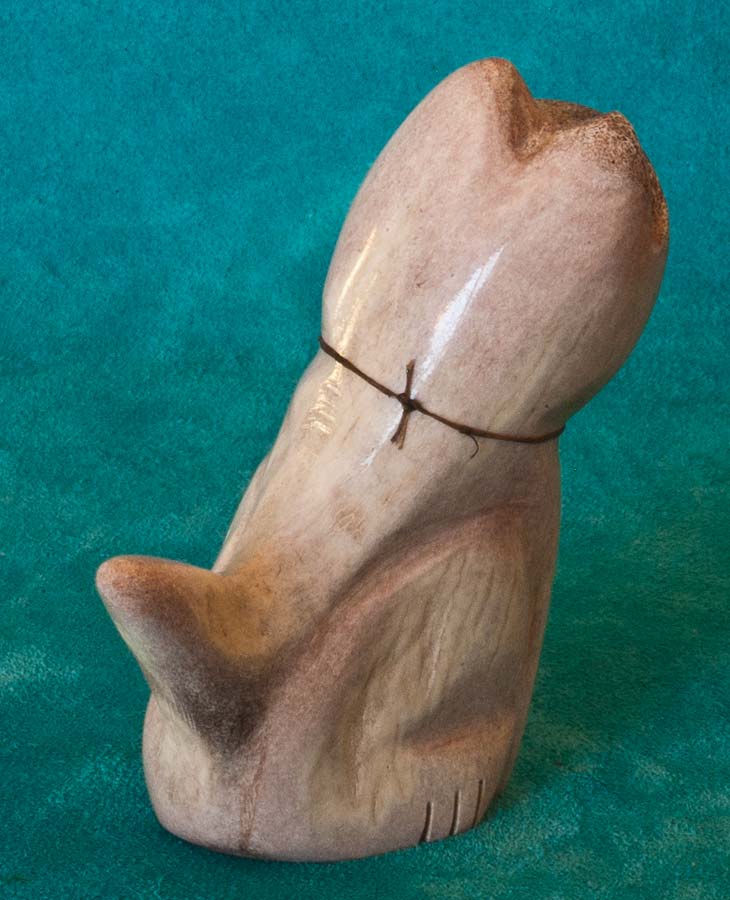
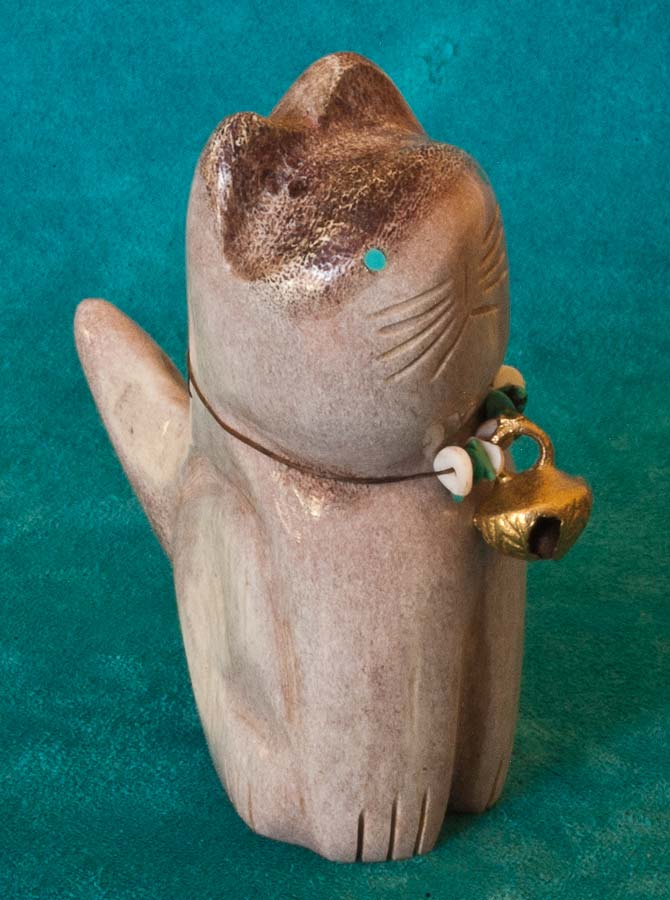
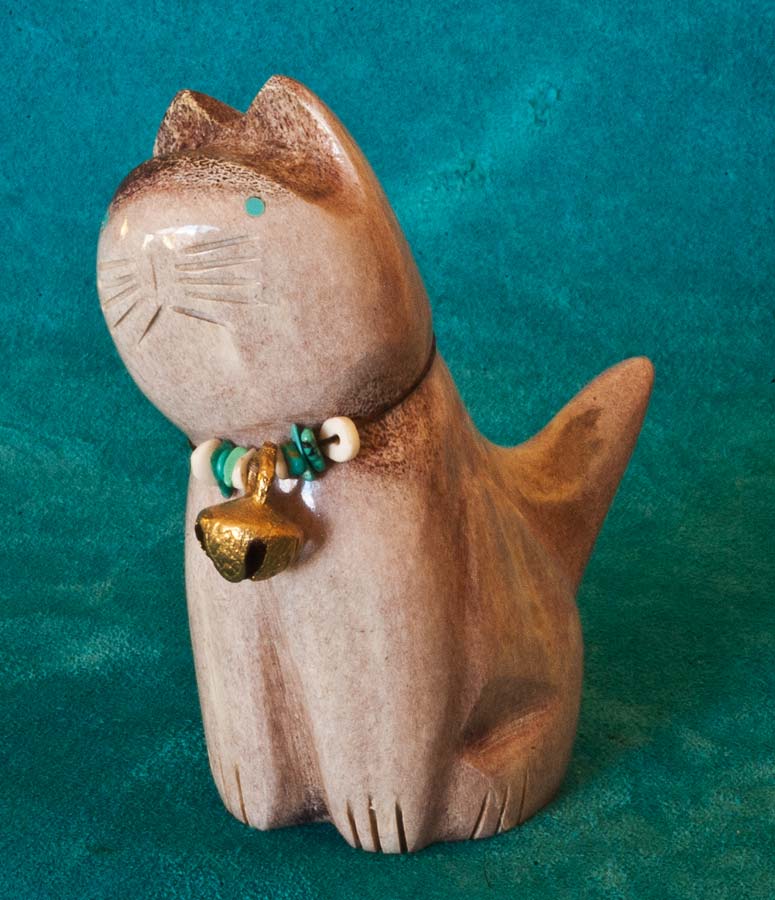
Robert Weahkee
Antler cat with turquoise inlaid eyes. Notice the turquoise collar with the brass bell.
2 3/4″ wide 3 1/2″ tall
$108